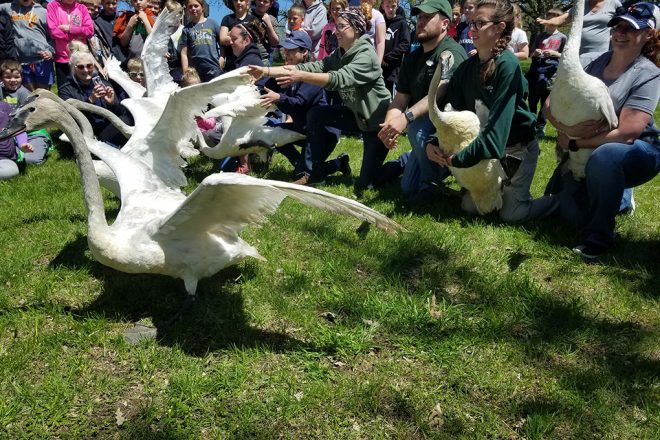A juvenile trumpeter swan, hatched in May 2018 at The Maryland Zoo, was recently released in Iowa as part of a conservation program.
Earlier this month t
Trumpeter swans are the largest waterfowl species native to North America and the largest swan in the world. They can weigh up to 30 pounds, and are known for their bright white feathers, black beaks, very large webbed feet and a six-foot wingspan.
In the early 1900s, trumpeter swans were nearly hunted to extinction for their skin, feathers, meat and eggs. The passage of the Migratory Bird Treaty Act of 1918 gave protection to trumpeter swans and other birds which helped curb illegal killing, however the population continued to decline and in 1932 it was believed that there were fewer than 70 trumpeter swans remaining. In 1935, the U.S. government established Red Rock Lakes National Wildlife Refuge (NWR) in Montana’s Centennial Valley to protect the remaining trumpeters.

Trumpeter swans disappeared from Iowa by the late 1880s. For the last two decades, IDNR has worked to reestablish trumpeter swan populations in the state. Several other AZA-accredited zoos also participate in the release program along with The Maryland Zoo.
The Zoo’s trumpeter swans are viewable at the pond in the Maryland Wilderness Farmyard. Their nest is across the pond from the dock, however the swans use the entire area during the day as they swim on the pond and forage for small insects and aquatic vegetation. Currently, the pair has laid their fourth clutch of eggs which is due to hatch soon.











Share this article